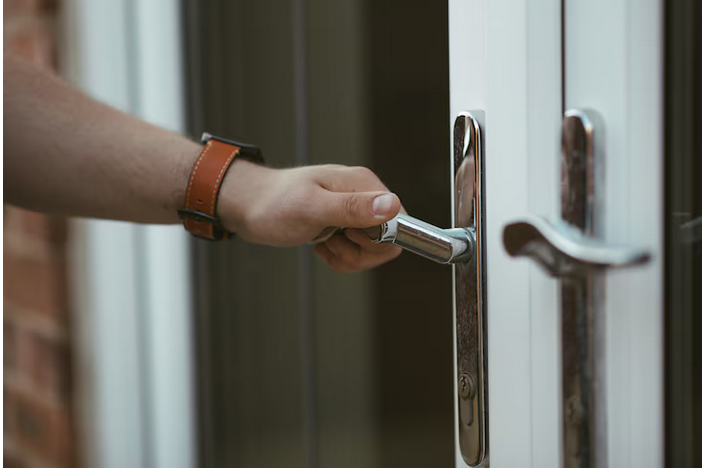Security doors have come a long way since their inception. Once a simple barrier to entry, they have evolved into sophisticated systems that not only provide physical protection but also incorporate advanced technology to enhance safety and convenience. This article will explore the journey of security doors, tracing their progression from basic designs to the cutting-edge solutions of today.
The Origins of Security Doors
The concept of security doors can be traced back to ancient civilizations, where they served as the first line of defense against intruders. These early iterations were often constructed from heavy materials like wood, stone, or metal, designed to withstand physical force. They were primarily focused on deterring and delaying unauthorized access, relying on their sheer strength and weight to keep unwanted individuals at bay.
The Emergence of Locking Mechanisms
As time passed, the need for more advanced security measures became apparent. The introduction of locking mechanisms marked a significant step in the evolution of security doors. These mechanisms ranged from simple pin-and-tumbler locks to more sophisticated deadbolts and electronic keypad systems. The inclusion of these locking devices added an extra layer of protection, making it increasingly difficult for would-be intruders to gain entry.
The Rise of Reinforced Doors
In response to the growing sophistication of burglary techniques, security door manufacturers began to develop reinforced designs. These doors incorporated thicker, more durable materials, such as steel or reinforced fiberglass, to enhance their resistance to physical attacks. The use of reinforced frames, hinges, and locking mechanisms further strengthened the overall structure, making it harder for criminals to forcefully breach the entry point.
Advancements in Door Hardware
As the security door industry evolved, the focus shifted towards improving the hardware components. Manufacturers introduced innovative lock designs, including biometric scanners, smart cards, and remote access systems. These advancements allowed for more secure and convenient access control, as users could now authenticate their identity through fingerprints, iris scans, or unique access codes instead of relying solely on traditional keys.
Integrated Security Systems
The integration of security doors with comprehensive security systems marked a significant milestone in the industry's development. By connecting these doors with surveillance cameras, motion sensors, and alarm systems, homeowners and businesses could enhance the overall security of their premises. This integration enabled remote monitoring, real-time alerts, and the ability to control access from a centralized location, offering a more holistic approach to security.
Energy-Efficient and Sustainable Solutions
In recent years, the security door industry has also embraced the principles of energy efficiency and sustainability. Manufacturers have developed doors that incorporate insulation materials and advanced weatherstripping to improve thermal performance, reducing energy costs and enhancing the overall environmental impact of these security solutions.
The Future of Security Doors
As technology continues to evolve, the future of security doors promises even more exciting advancements. Emerging trends include the integration of smart home automation, where security doors can communicate with other connected devices to provide seamless and intelligent security solutions. Additionally, the use of advanced materials, such as self-healing coatings and impact-resistant composites, could further enhance the durability and longevity of these security systems.
Conclusion
The evolution of security doors has been a remarkable journey, marked by a constant pursuit of improved physical protection, technological innovation, and enhanced user experience. From the simple wooden barriers of the past to the high-tech, integrated systems of today, the security door industry has consistently responded to the changing needs and challenges faced by homeowners and businesses. As we look towards the future, the continued advancements in materials, locking mechanisms, and smart integration will undoubtedly redefine the way we approach security and safety in our built environments.





Comments